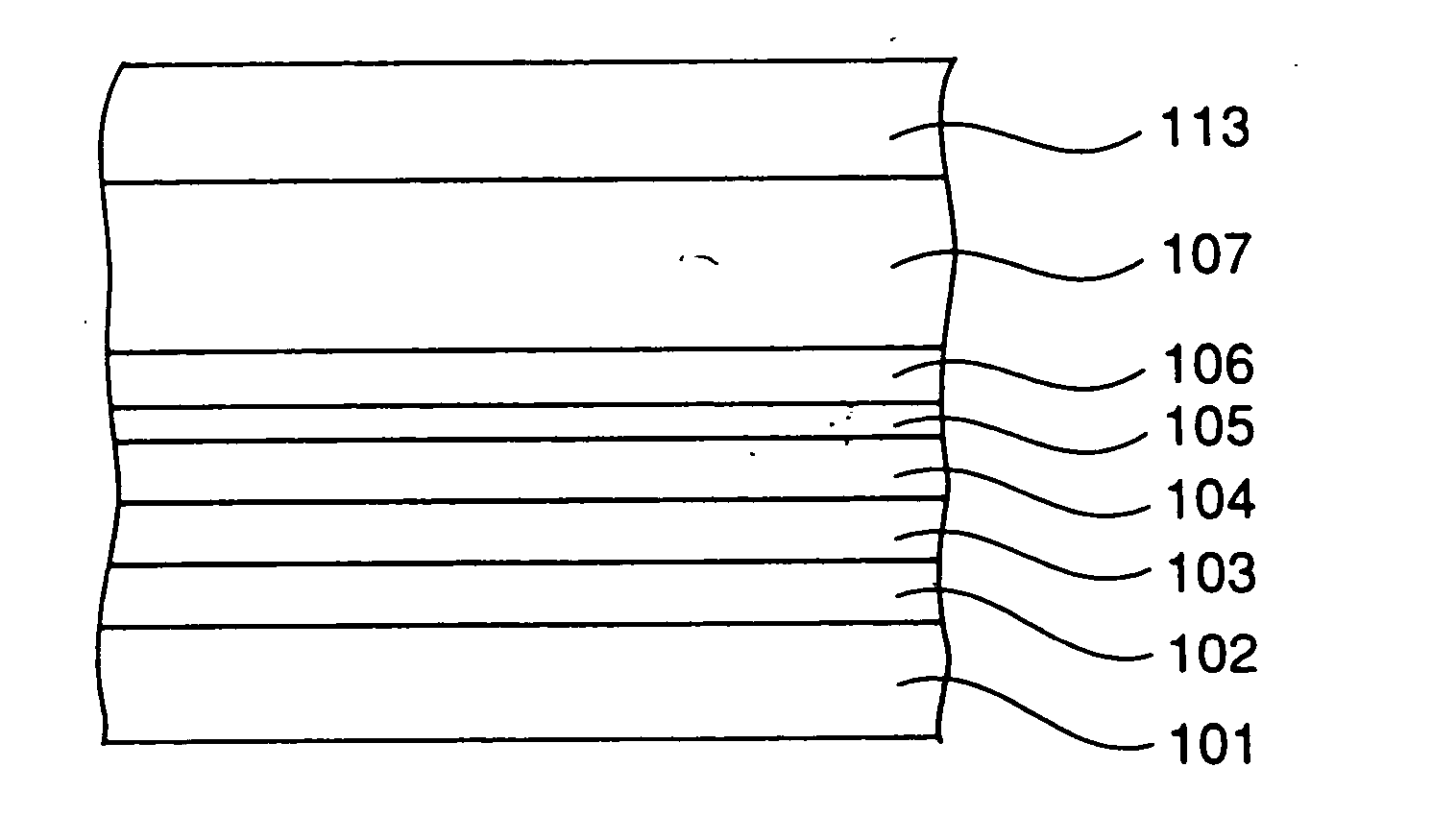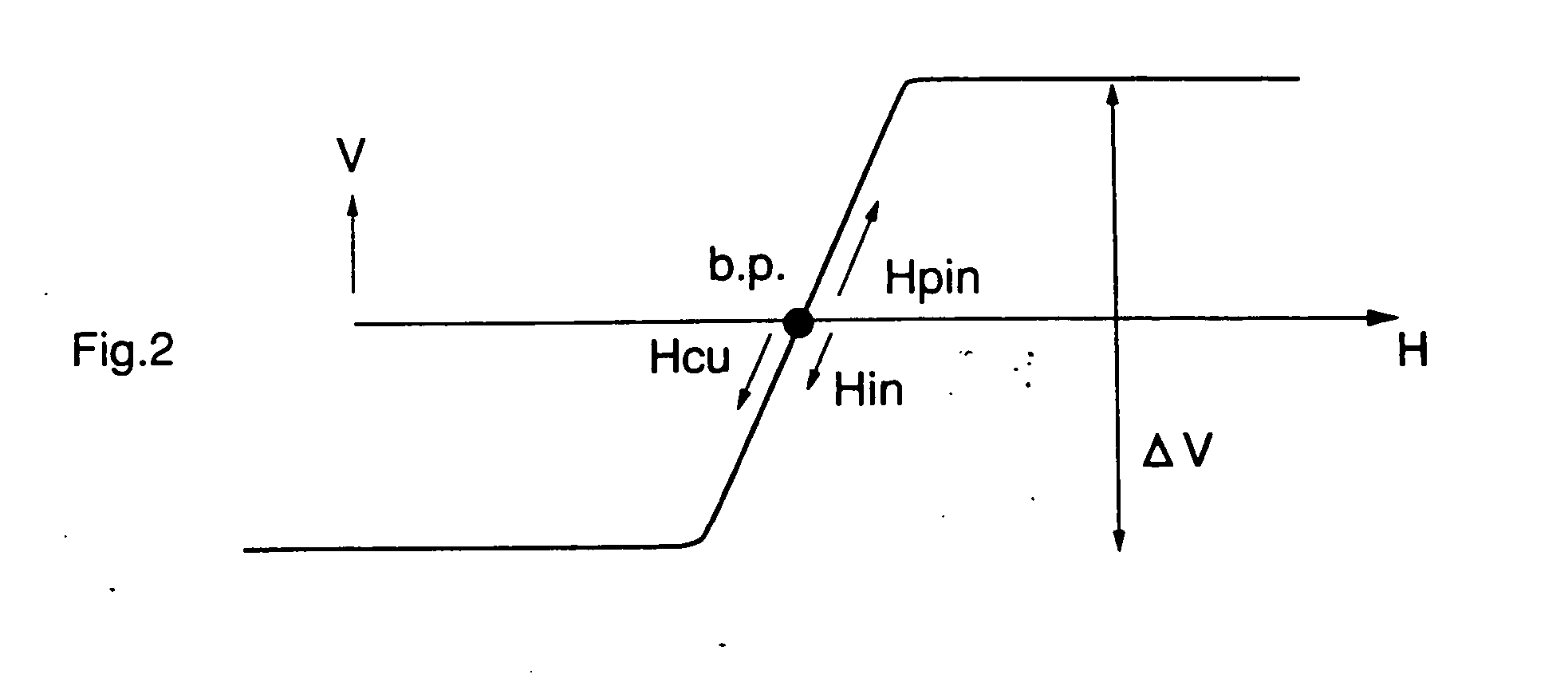Magnetoresistance effect element, magnetic head, magnetic head assembly, magnetic storage system
a technology of magnetic head and effect element, which is applied in the field of magnetic head, magnetic head assembly, and magnetic recording/recording system, can solve the problems of shifting the bias point and difficulty in effectively correcting the thus-shifted operating poin
- Summary
- Abstract
- Description
- Claims
- Application Information
AI Technical Summary
Benefits of technology
Problems solved by technology
Method used
Image
Examples
first embodiment
First mentioned is the embodiment of the invention in which the free layer (first ferromagnetic layer) is thinned.
The problems with the technique of “thinning the free layer” which the present inventors have recognized in the process of achieving this embodiment of the invention are described in detail.
As so mentioned hereinabove, remarkable increase in the sensitivity of magnetoresistance effect devices is realized not only by increasing the MR ratio but also by reducing the thickness of the free layer (that is, by reducing the product of Ms×t). In a broad way, the output increases, being in reverse proportion to the product of Ms×t of the free layer. However, the present inventors own investigations have verified that the technique of thinning the free layer brings about the following problems.
The first problem is that the bias point designing in an applied sense current is difficult. When all the magnetic fields applied to the free layer being driven are summed up and when...
example 1
Top SFSV (with free layer of NiFe / Co(Fe))
5 nanometer Ta / x nm Cu / 2 nm NiFe / 0.5 nm CoFe / 2 nm Cu / (2+y) nm CoFe / 0.9 nm Ru / 2 nm CoFe / 7 nm IrMn / 5 nanometer Ta (7-1)
This is to exemplify a so-called top-type spin valve film in which an antiferromagnetic layer is above a free layer.
FIG. 5 is a conceptual view showing a typical film constitution of the magnetoresistance effect device of this Example. Precisely, the device illustrated comprises a high-conductivity layer 101 peculiar to the invention, a free layer 102 and a spacer layer 103 all laminated on a subbing buffer layer 112 in that order, and comprises pinned ferromagnetic layers 104 and 106 as antiferromagnetically coupled to each other via a layer 105, in which the layer 106 is pinned in one direction by an antiferromagnetic layer 10. On the antiferromagnetic layer 107, formed is a cap layer 113. In the film structure of (7-1), the free layer 102 is of a laminate film composed of two layers 110 and 111, and the nonmagnetic high-c...
example 2
Top SFSV (with simple CoFe free layer)
5 nanometer Ta / x nm Cu / 2 nm CoFe / 2 nm Cu / 2.5 nm CoFe / 0.9 nm Ru / 2 nm CoFe / 7 nm IrMn / 5 nanometer Ta (8-1)
5 nanometer Ta / x nm Cu / 2 nm CoFe / 2 nm Cu / 2.5 nm CoFe / 0.9 nm Ru / 2 nm CoFe / 10 nm PtMn / 5 nanometer Ta (8-2)
In this Example 2, used is a simple free layer of a single-layer CoFe, being different from the laminate free layer of NiFe / Co or NiFe / CoFe as in Example 1. In FIG. 1, the structure of this Example 1 has a single-layer CoFe as the free layer 102 and a single-layer Cu as the high-conductivity layer 101.
As already mentioned ultra-thin free layers below 4.5 nanometer Tesla in NiFe face various difficulties. The single-layer CoFe free layer is advantageous in that the soft magnetic characteristics control is relatively easy even though the thickness of the layer is extremely small. A third additive element of B, Cu, Al, Rh, Pd, Ag, Ir, Au, Pt, Ru, Re, Os or the like could be added to CoFe, if desired. However, if pure Co is used in place of ...
PUM
| Property | Measurement | Unit |
|---|---|---|
| thickness | aaaaa | aaaaa |
| thickness | aaaaa | aaaaa |
| thickness | aaaaa | aaaaa |
Abstract
Description
Claims
Application Information
 Login to View More
Login to View More - R&D
- Intellectual Property
- Life Sciences
- Materials
- Tech Scout
- Unparalleled Data Quality
- Higher Quality Content
- 60% Fewer Hallucinations
Browse by: Latest US Patents, China's latest patents, Technical Efficacy Thesaurus, Application Domain, Technology Topic, Popular Technical Reports.
© 2025 PatSnap. All rights reserved.Legal|Privacy policy|Modern Slavery Act Transparency Statement|Sitemap|About US| Contact US: help@patsnap.com



